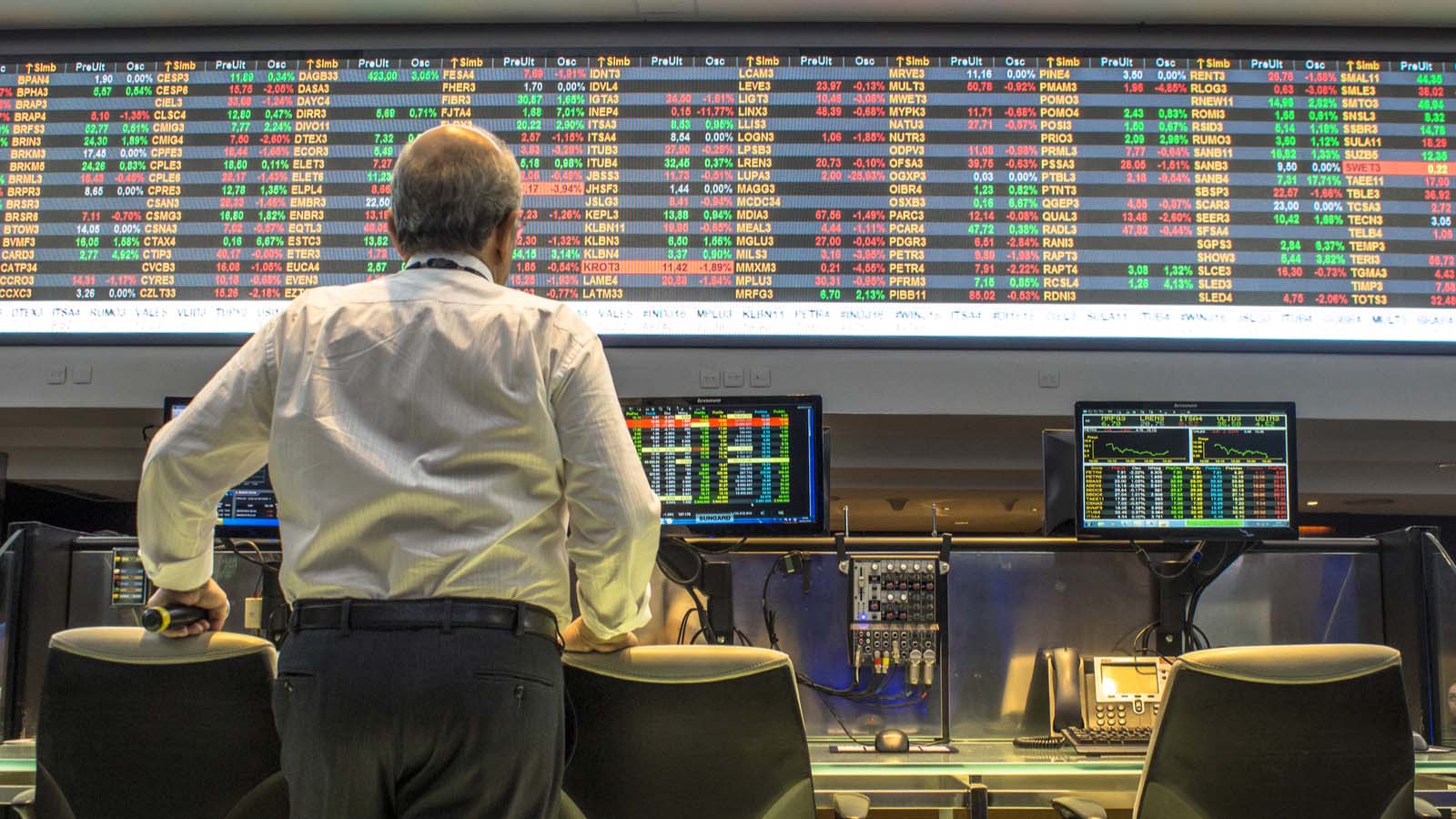The stock market has been defying gravity ever since its spectacular March crash, leading some to wonder if another big fall is in store. With a contentious presidential election on the horizon and plenty of pandemic-related uncertainty hanging over equities, it’s fair to assume there are a lot of overvalued stocks out there.
Just because a stock is trading near all-time highs doesn’t mean it’s overvalued. With that being said, it’s hard to imagine how these equities could be perfectly priced when you consider all they stand to lose.
With that in mind, here are 7 overvalued stocks investors should sell for October:
- Tesla (NASDAQ:TSLA)
- Workhorse (NASDAQ:WKHS)
- Apple (NASDAQ: AAPL)
- Zoom (NASDAQ:ZM)
- Beyond Meat (NASDAQ:BYND)
- Moderna (NASDAQ:MRNA)
- American Airlines (NASDAQ:AAL)
While investors shouldn’t be exiting the market completely, it makes sense to trade with caution right now.
Overvalued Stocks to Sell: Tesla (TSLA)

Tesla has had an incredible run over the past year as investors continuously pile into the electric vehicle maker. The firm’s eccentric CEO Elon Musk has kept the company in the spotlight and the bright future of electric vehicles is undeniable. It’s what’s kept TSLA stock elevated despite bears (like me) cautioning against buying into the frenzy.
As Rob Arnott, founder and chairman of Research Affiliates put it, “I liken purchases of bubble stocks to picking up nickels in front of a steamroller: The nickels are reliably there, but you just don’t know how close the steamroller is.”
Tesla is a bubble stock. Although TSLA stock has managed to continue ever higher, the EV bubble will pop eventually and Tesla investors will be left holding the bag. TSLA is now worth more than Ford (NYSE:F), General Motors (NYSE:GM), BMW (OTCMKTS:BAMXF), Daimler (OTCMKTS:DDAIF), and Volkswagen (OTCMKTS:VLKPY) combined.
Arnott pointed out that at current levels, every car Tesla has produced added $500,000 to its value. Toyota, by contrast, is worth $20,000 for each car produced in the last 10 years. If that doesn’t scream overvalued stock, I don’t know what does.
Workhorse (WKHS)

Tesla is a risky play within the EV bubble, but Workhorse is even riskier. The firm makes electric delivery vehicles, a match made in heaven to many investors. After all, online shopping has become one of America’s favorite pastimes thanks to Amazon, and electric vehicles are rapidly gaining popularity.
At first glance WKHS stock seems like a good way to play the EV trend. The firm’s vans are said to reduce ‘last-mile’ costs and big-names like UPS and USPS have already ordered Workhorse vans. In fact, WKHS’s growth story isn’t a bad one — but at $27 per share, any optimism regarding future profits is already baked in.
The pandemic has stalled the rush toward electric vehicles for many companies — low oil costs coupled with tight budgets means upgrading an entire fleet probably isn’t number one on the list of priorities.
Plus, even if Workhorse ends up supplying the postal service with all new vans, it’s unlikely to generate much of a profit — in fact, it could even yield negative margins.
Zoom (ZM)

We’ve reached a point in the pandemic in which some of the stay-at-home superstars have become overvalued stocks. Video communication platform Zoom is one such stock.
The firm certainly has a growth story — the pandemic proved that working from home is possible for a wide variety of industries and many believe that’s a change that’s here to stay, pandemic or not.
Of course, returning to the office is inevitable for many organizations, at least part-time. But I believe a shift toward more remote work is likely. Still, ZM stock is overvalued.
ZM stock is trading at 170 times its forward earnings. To put that into perspective, internet giant Alphabet’s (NASDAQ:GOOGL) forward P/E is just 26. What’s more, Google offers a competing product. So does Facebook (NASDAQ: FB). And Microsoft (NASDAQ: MSFT).
That’s not to say Zoom will fade into oblivion. The firm might be able to hang on to its market share despite bigger and better-established competitors. It could also get bought out.
But the most likely scenario is a massive fall from grace as the pandemic subsides and stay-at-home stocks lose their luster. Only then would I consider buying ZM stock, and probably as a takeover bet more than anything else.
Apple (AAPL)

There’s no doubt that Apple is a quality company, but AAPL stock has become overvalued. The firm’s rock-solid finances and ability to rope consumers into its ecosystem typically make it a good stock to buy and hold forever. But I’d be hesitant to buy APPL stock at current prices.
While it has come down from its highs at the beginning of September, Apple’s market capitalization of almost 2 trillion gives me pause. Earlier this month, the tech firm was worth more than the U.K.’s entire FTSE 100 combined. No matter how much Apple benefits from its 5G iPhone release, it’s hard to believe that can be a reasonable valuation.
That’s because Apple’s cash-cow — the iPhone — just won’t continue to deliver the same kind of growth investors are used to. Smartphones have been a relatively new development over the past decade, but growth in that market is slowing as most people nowadays have one version or the other.
Sure, there’s always going to be a market for smartphones as customers upgrade, and Apple is a solid bet there with its all-encompassing ecosystem, but that market is considerably smaller than the one investors have gotten used to.
Ultimately, EPS growth for AAPL stock is slowing. That doesn’t make it a bad stock to own, but at these levels, I wouldn’t buy-in. Instead, I’d lock in profits and wait for another big pullback to take a new position.
Beyond Meat (BYND)

Newly IPO’d stocks like Beyond Meat have been all the rage this year as investors look for high-growth stocks to deliver profits. Admittedly, Beyond Meat has fit the bill — the stock is up roughly 50% since the start of the year.
But BYND’s stellar growth isn’t likely to continue for much longer because it’s product is more of a fad than a staple. While it’s true that plant-based diets have gained notoriety in recent years, a meat-like burger isn’t something that has a ton of staying power.
Not only are Beyond burgers more expensive than whole-food meat replacements, but they’re also more expensive than traditional meat. So, that leaves a very small group of people who will carry on buying them once the novelty fades: vegans and vegetarians who aren’t overly concerned with eating healthily.
Whether a Beyond burger is healthier than a traditional meat burger is still up for debate, but the burger is definitely not healthier than whole-food options like beans or lentils. Of course, veggie burgers won’t cease to exist — big names like Tyson Foods (NYSE:TSN) also produce them, and have done for years — but they’ll go out of fashion eventually.
The bottom line for BYND stock is that it’s not delivering a wow product that will drive this kind of growth in the longer term.
Moderna (MRNA)

Another pocket of the stock market that’s become very bubbly in recent months is vaccine makers. Investors have been trying to work out whose coronavirus vaccine will end the worldwide pandemic, and the speculation has pushed potential candidates’ share prices into overvalued territory. Moderna is one such stock that’s simply gotten too big for its britches.
Here’s the thing. Whoever comes out with the first viable vaccine candidate will undoubtedly experience a bump. But speculation about who that might be is gambling for most. This is the first time in history that the public has followed vaccine development so closely and a lot can happen from having a promising candidate to an injection ready for the general public.
Not only that, but there could be more than one viable vaccine (or none at all, for that matter). Moderna has the capacity to produce between 500 million and 1 billion doses of its mRNA-1273 vaccine in 2021. Assuming other drugmakers are also successful in developing a usable vaccine to deploy around the world, there isn’t much to look forward to beyond 2021.
Moderna’s problem is that having a viable vaccine is only going to pay the bills for so long. Once the world has achieved global immunity, it’s unlikely that demand for the vaccine will continue. At best, a top-up could be needed several years later. That’s a problem for MRNA stock because the firm doesn’t have much else to fall back on.
That makes Moderna stock even riskier than some of the other vaccine plays because while it will see a one-time cash influx from a successful vaccine, if mRNA-1273 isn’t successful, the stock will be a complete dud.
American Airlines (AAL)

Lumping an airline into the ‘overvalued stocks’ category might seem impossible considering the sector’s immense drop earlier this year, but American Airlines fits the bill. The coronavirus pandemic was a perfect storm of worst-case scenario situations for American, and AAL stock will suffer far into the future as a result.
As Joshua Della Vedova, assistant professor of finance at the University of San Diego School of Business points out, airlines are some of the worst-hit by this pandemic due to their low-margin business model:
“From a purely financial perspective, firms that are carrying substantial amounts of debt and have had a business disruption, such as airlines, will suffer the most,” Vedova wrote in an email to InvestorPlace. “Despite historically low interest rates, refinancing of these debts may cause significant insolvency risk if this crisis is increasingly protracted. Despite many of these firms receiving bailouts, there may be a push for nationalizing airlines or other firms that can’t continue with the current level of losses.”
He also points out that even among these hard-up companies, some are in worse shape than others. “Many firms are running in their most barebones state and at this rate can’t continue for another year or two.”
While airlines will likely see a rebound once the pandemic subsides, AAL will likely be one of the last to fully recover.Other airline stocks such as JetBlue (NASDAQ:JBLU) and Southwest (NYSE:LUV) are better positioned to capitalize on a return to domestic travel.
On the date of publication, Laura Hoy did not have (either directly or indirectly) any positions in the securities mentioned in this article.
Laura Hoy has a finance degree from Duquesne University and has been writing about financial markets for the past eight years. Her work can be seen in a variety of publications including InvestorPlace, Benzinga, Yahoo Finance and CCN.
